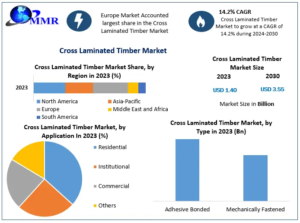
CONFERENCE
Academic publishing plays a role in the landscape of research and scholarship. It not only facilitates the dissemination of knowledge but also serves as a benchmark for academic credibility and professional growth. Publishing research findings helps scholars establish their expertise, contribute to their fields, and gain recognition among peers. The publication process fosters critical thinking and refinement of ideas, ultimately enhancing the quality of research. For early-career researchers, getting published can open doors to collaborations, funding opportunities, and career advancements.

Overview of International Conferences in India
India has emerged as a prominent host for international conference, attracting scholars, researchers, and industry professionals from around the globe. With its diverse cultural heritage and growing academic institutions, India offers a unique platform for knowledge exchange across various disciplines, including science, technology, humanities, and social sciences. These conference not only provide opportunities for networking and collaboration but also present a chance to share groundbreaking research with a global audience. As India continues to elevate its status in the academic community, participating in these conferences becomes increasingly valuable for researchers aiming to publish their work.
Researching the Right Conference
- Identifying Your Field of Study
When considering where to publish your research, the first step is to identify your specific field of study. Aligning your research with relevant conferences is crucial for increasing the likelihood of acceptance and ensuring that your work reaches the right audience. Begin by exploring academic journals and publications in your discipline to identify common themes and trends. Use online platforms like Google Scholar, ResearchGate, or specialized academic databases to find conferences that cater specifically to your area of expertise. This will not only enhance your chances of acceptance but also provide you with valuable insights into the current research landscape. - Evaluating Conference Reputation
The reputation of a conference plays a significant role in the visibility and credibility of your published work. Look for conferences organized by well-known institutions, associations, or organizations in your field. Consider the following factors when evaluating a conference’s reputation:
- Reputable Organizers: Research the background of the organizing body. Established organizations often have more stringent peer-review processes and higher standards for accepted papers.
- Peer-Reviewed Processes: Ensure the conference employs a rigorous peer-review process for submissions. This adds credibility to your work and assures that it meets quality standards.
- Past Conference Impact: Investigate the history of the conference. Look for metrics such as the number of attendees, previous keynote speakers, and the impact of past published proceedings. Higher attendance and well-known speakers often indicate a respected conference.
- Understanding Conference Themes and Objectives
Before submitting your work, it is essential to understand the conference’s themes and objectives. Each conference typically has a specific focus or set of topics it aims to address. Carefully read the conference call for papers, which outlines the themes, topics, and objectives for that year. Consider the following steps:
- Review Past Programs: Look at the agendas or programs from previous iterations of the conference to get a sense of the topics that have been covered and how they align with your research.
- Align Your Work: Ensure that your research aligns with the conference’s focus. Tailor your paper to address the themes and objectives highlighted in the conference announcement. This not only demonstrates your awareness of the conference’s purpose but also enhances your chances of acceptance.
- Reach Out to Organizers: If you have any questions about the suitability of your work, consider reaching out to the conference organizers for clarification. They can provide valuable insights and help you understand how to position your research effectively.
Preparing Your Paper
- Understanding Submission Guidelines
Before you begin writing your paper, it’s essential to thoroughly review the submission guidelines provided by the conference. These guidelines detail the requirements for formatting, length, citation styles, and other crucial aspects of your submission. Understanding and adhering to these requirements is vital, as failure to comply can result in immediate rejection. Here are some key elements to consider:
- Formatting Requirements: Pay close attention to the required formatting style (e.g., APA, MLA, IEEE). This includes font size, margins, and overall layout. Ensuring your paper meets these standards reflects your professionalism and attention to detail.
- Length Restrictions: Conferences often impose strict word or page limits. Make sure your paper fits within these limits while adequately conveying your research. If your work is too long or too short, it may be viewed unfavorably by reviewers.
- Submission Process: Familiarize yourself with the submission platform used by the conference. Some conferences use specific software (like EasyChair or Ex Ordo) for paper submissions, while others may require email submissions. Understanding the process in advance will help you avoid last-minute issues.
- Crafting a Strong Abstract
The abstract is often the first (and sometimes the only) part of your paper that reviewers will read, making it a critical component of your submission. A well-crafted abstract should summarize the key points of your research and entice reviewers to read further. Here are some tips for writing an impactful abstract:
- Be Concise and Clear: Aim for clarity and brevity. An effective abstract typically ranges from 150 to 250 words. Focus on conveying your research question, methods, findings, and significance without unnecessary jargon.
- Highlight Key Contributions: Clearly state the main contributions of your research. What makes your work unique? Why is it important to the field? Make sure to emphasize the novelty and relevance of your findings.
- Use Keywords: Include relevant keywords in your abstract to enhance visibility. This will help reviewers and attendees understand the core themes of your research and improve the chances of your paper being included in conference proceedings.
- Structuring Your Paper
A well-structured paper is essential for presenting your research effectively. A clear organization not only enhances readability but also makes it easier for reviewers to follow your arguments. Here are key components to consider:
- Introduction: Start with an engaging introduction that outlines the research problem, provides context, and states your objectives. Clearly articulate the significance of your study and the research questions you aim to address.
- Literature Review: Include a brief literature review that contextualizes your research within existing studies. This helps to establish the foundation for your work and highlights gaps that your research addresses.
- Methodology: Clearly describe your research design, data collection methods, and analysis techniques. This section should provide enough detail for others to replicate your study.
- Results and Discussion: Present your findings in a clear and logical manner. Use visuals like tables and graphs to support your data. Follow this with a discussion that interprets your results and connects them to your research questions and existing literature.
- Conclusion: Summarize your key findings and their implications. Discuss any limitations of your study and suggest directions for future research. A strong conclusion leaves a lasting impression on readers.
- Formatting: Ensure your paper adheres to the formatting guidelines specified by the conference. This includes appropriate headings, subheadings, and references. A well-formatted paper enhances professionalism and aids in clarity.
Submitting Your Paper
- Online Submission Process
Once you have prepared your paper according to the conference guidelines, the next step is the submission process. Most international conferences utilize online platforms for paper submissions, which streamline the process and facilitate communication between authors and organizers. Here’s a walkthrough of common submission platforms and their features: - Common Platforms: Familiarize yourself with popular submission systems such as EasyChair, Ex Ordo, or Microsoft CMT. Each platform has its own interface, so it’s helpful to create an account in advance and explore the features.
- Uploading Your Paper: Typically, you will be required to upload your manuscript in a specific file format (e.g., PDF or Word). Ensure that your document is properly formatted and free of errors before uploading.
- Author Information: You’ll need to provide information about yourself and any co-authors, including names, affiliations, and contact details. Make sure that all details are accurate, as they will be used for future correspondence.
- Abstract and Keywords: Most platforms will prompt you to enter your abstract and relevant keywords during the submission process. Take care to copy and paste this information accurately to avoid discrepancies.
- Reviewing Submission: Before finalizing your submission, review all entered details and uploaded files. Some platforms allow you to preview how your submission will appear to reviewers, which can help identify any formatting issues.
- Adhering to Deadlines
Meeting deadlines is crucial in the academic publishing process, especially for conference submissions. Here’s why tracking deadlines is important and how to manage them effectively: - Importance of Timeliness: Late submissions are typically not accepted, which can hinder your chances of presenting your research. Conferences often have strict timelines for abstract submissions, full paper submissions, and final revisions.
- Creating a Timeline: Develop a personal timeline that includes all relevant deadlines, such as abstract submission, paper submission, and revision deadlines. Utilize a calendar or project management tool to keep track of these dates.
- Setting Personal Deadlines: To avoid last-minute stress, set personal deadlines ahead of the official conference deadlines. This can help you ensure that you have ample time for revisions, feedback from peers, and any unforeseen issues that may arise.
- Regular Reminders: Set reminders for important dates, such as submission deadlines and feedback periods. This proactive approach can help you stay organized and on track throughout the process.
- Confirmation and Communication
After submitting your paper, it’s important to understand what to expect and how to communicate effectively with the conference organizers: - Submission Confirmation: Upon successful submission, you should receive a confirmation email from the conference organizers. This email typically includes details about your submission and any reference numbers you may need for future correspondence.
- Tracking Submission Status: Many platforms allow you to track the status of your submission. Familiarize yourself with how to check your paper’s progress and whether it has been assigned to reviewers.
- Communication Protocol: If you do not receive confirmation or if you have questions regarding your submission, it’s appropriate to reach out to the conference organizers. Be polite and concise in your communication, providing necessary details such as your submission ID and the title of your paper.
- Response Time: Understand that response times may vary, especially during peak submission periods. Patience is essential; however, if you have not received a response within a reasonable timeframe, it’s acceptable to send a follow-up inquiry.
- Preparing for Feedback: Once your paper has been reviewed, be prepared for feedback, whether it is an acceptance, a request for revisions, or a rejection. Constructive criticism can provide valuable insights for improving your research and future submissions.
Navigating the Peer Review Process
- Understanding Peer Review
The peer review process is a critical step in academic publishing, ensuring that research is rigorously evaluated by experts in the field before being accepted for presentation or publication. Here’s what you need to know:
- Definition: Peer review is the evaluation of a manuscript by independent experts in the same field. Reviewers assess the quality, relevance, and originality of the research to determine if it meets the standards for publication.
- Importance:
- Quality Assurance: Peer review helps maintain high standards in academic publishing by filtering out unsubstantiated claims or poorly conducted research.
- Constructive Feedback: Reviewers provide valuable insights that can enhance the quality of your work. Their critiques often highlight areas for improvement and can lead to a stronger final product.
- Credibility: Being peer-reviewed adds credibility to your research, making it more respected within the academic community and increasing its potential impact.
- Types of Peer Review:
- Single-Blind: Reviewers know the identity of the authors, but authors do not know the identities of the reviewers.
- Double-Blind: Both reviewers and authors are unaware of each other’s identities, which aims to reduce bias in the review process.
- Open: Both the authors and reviewers are aware of each other’s identities, promoting transparency.
- Responding to Feedback
After the peer review process, you will receive feedback from the reviewers, which may include suggestions for revision or acceptance conditions. Here’s how to respond effectively:
- Review Comments Thoroughly: Carefully read all the comments and suggestions provided by the reviewers. Take notes to understand their perspectives and recommendations.
- Prioritize Changes: Categorize the feedback into major and minor revisions. Major revisions may require significant changes to your paper, while minor suggestions may involve grammatical corrections or formatting adjustments.
- Develop a Response Document: Create a document addressing each comment individually. Clearly indicate how you plan to revise the paper in response to the feedback. This transparency shows respect for the reviewers’ input.
- Be Professional and Respectful: When responding to feedback, maintain a professional tone. Even if you disagree with certain comments, express your points respectfully, explaining your reasoning and providing evidence when necessary.
- Revise Accordingly: Implement the changes based on the feedback. Ensure that your revisions enhance the clarity and quality of your paper. If you choose not to follow a specific recommendation, briefly justify your decision in your response document.
- Resubmission Process
If your paper requires revisions or if you are resubmitting a revised manuscript, follow these guidelines for a smooth resubmission process:
- Check Resubmission Guidelines: Different conferences may have varying procedures for resubmission. Make sure to review the specific guidelines provided by the conference organizers regarding revised submissions.
- Submit by the Deadline: Ensure that your revised paper is submitted within the specified deadline for resubmissions. Late submissions may result in your paper being rejected.
- Include a Cover Letter: When resubmitting, include a cover letter summarizing the revisions made in response to reviewer comments. Briefly outline how you have addressed each point raised by the reviewers.
- Format Changes Appropriately: Ensure that the revised manuscript adheres to the conference’s formatting requirements. Consistency in formatting is crucial for a professional presentation.
- Await Further Feedback: After resubmission, be prepared for the possibility of a second round of peer review. Reviewers may reassess your revisions, and additional feedback may be provided.
- Embrace Constructive Criticism: Regardless of the outcome, view the peer review process as an opportunity for growth. Use the feedback received to improve your future research endeavors and enhance your skills as a researcher and writer.
Top International Conferences in India
Explore the top international conferences in India, highlighting their significance, themes, and the unique opportunities they present.
A. Conference in Goa
Goa, known for its beautiful beaches and vibrant culture, also hosts a variety of international conferences that draw professionals from around the globe. One notable event is the International Conference on Sustainable Development, which focuses on innovative solutions for environmental challenges. Conference in Goa not only emphasizes sustainability but also provides an excellent platform for networking among researchers, policymakers, and industry leaders. Attendees can engage in workshops, panel discussions, and presentations that highlight the latest research and practices in sustainable development.
B. Conference in Hyderabad
Hyderabad, often referred to as “Cyber City,” is a hub for technology and innovation in India. The International Conference on Artificial Intelligence and Machine Learning held here is a prominent event that attracts experts from academia and industry alike. Conference in Hyderabad offers a blend of keynote speeches, paper presentations, and hands-on workshops, making it an ideal venue for professionals looking to deepen their understanding of AI and ML. Networking opportunities abound, allowing participants to connect with leaders in the field and explore potential collaborations.
C. Conference in Mumbai
Mumbai, India’s financial capital, hosts numerous prestigious conferences, including the International Conference on Business and Management. Conference in Mumbai focuses on contemporary issues in the business world, such as entrepreneurship, corporate governance, and financial management. With a diverse lineup of speakers and panelists, attendees can gain insights from industry leaders and researchers, as well as present their own work for publication opportunities. The dynamic atmosphere of Mumbai adds to the conference experience, making it an exciting place for knowledge exchange and professional growth.
Preparing for the Conference Presentation
- Creating an Engaging Presentation
Designing an engaging presentation is essential for effectively conveying your research and keeping your audience interested. Here are some tips to consider: - Use Visuals Wisely: Incorporate visuals like graphs, images, and charts to illustrate key points. Visuals should enhance understanding, not overwhelm the audience. Aim for clarity and simplicity.
- Limit Text on Slides: Avoid cluttering slides with too much text. Use bullet points or short phrases to highlight main ideas, leaving detailed explanations for your verbal presentation.
- Consistent Formatting: Maintain a consistent font style, size, and color scheme throughout your slides. This creates a professional look and helps your audience focus on the content.
- Clear Structure: Organize your presentation with a clear introduction, body, and conclusion. Begin with an overview of what you will cover, delve into your research findings, and end with key takeaways.
- Practice Good Design Principles: Use contrast effectively to make text readable, and ensure that colors are easy on the eyes. Avoid overly complex animations or transitions that may distract from your message.
- Practicing Your Delivery
Rehearsing your presentation is crucial for effective delivery and managing anxiety. Here’s how to prepare: - Rehearse Aloud: Practice your presentation out loud multiple times. This helps you become comfortable with the material and refine your timing. Aim to stay within the allotted time for your presentation.
- Record Yourself: Consider recording your practice sessions to review your delivery, body language, and pacing. This can help identify areas for improvement.
- Seek Feedback: Practice in front of colleagues or peers and request constructive feedback. Their input can provide insights you might not notice on your own.
- Manage Anxiety: Develop techniques to manage presentation anxiety, such as deep breathing exercises, visualization of success, or positive affirmations. Remember that it’s normal to feel nervous before presenting.
- Know Your Venue: If possible, visit the conference venue ahead of time to familiarize yourself with the layout and technology. Knowing how to operate the equipment can reduce anxiety on the day of the presentation.
- Engaging with Your Audience
Interacting with your audience enhances their engagement and understanding of your research. Here are strategies to facilitate discussions and handle questions: - Encourage Participation: Ask open-ended questions during your presentation to prompt audience participation. This can create an interactive environment and encourage discussion.
- Use Examples and Anecdotes: Relate your research to real-world scenarios or share relevant anecdotes to make your presentation more relatable and memorable.
- Invite Questions: Let the audience know that questions are welcome at any point during your presentation. This can help create a dialogue and encourage curiosity about your research.
- Handle Questions Gracefully: When responding to questions, listen carefully and take a moment to think before answering. If you don’t know the answer, it’s okay to admit it and offer to follow up later.
- Summarize Key Points: At the end of your presentation, summarize the main points and invite final questions or comments. This reinforces your message and ensures that the audience leaves with a clear understanding of your work.
Publishing your research at international conferences in India involves several crucial steps. First, it’s essential to research and identify the right conference that aligns with your field of study and has a solid reputation. Next, prepare your paper meticulously by adhering to submission guidelines, crafting a strong abstract, and structuring your work clearly. After submitting your paper, you will navigate the peer review process, responding to feedback and making necessary revisions. preparing for your presentation involves creating engaging slides, practicing your delivery, and actively engaging with your audience. Each of these steps is vital to ensure a successful conference experience and publication outcome.




